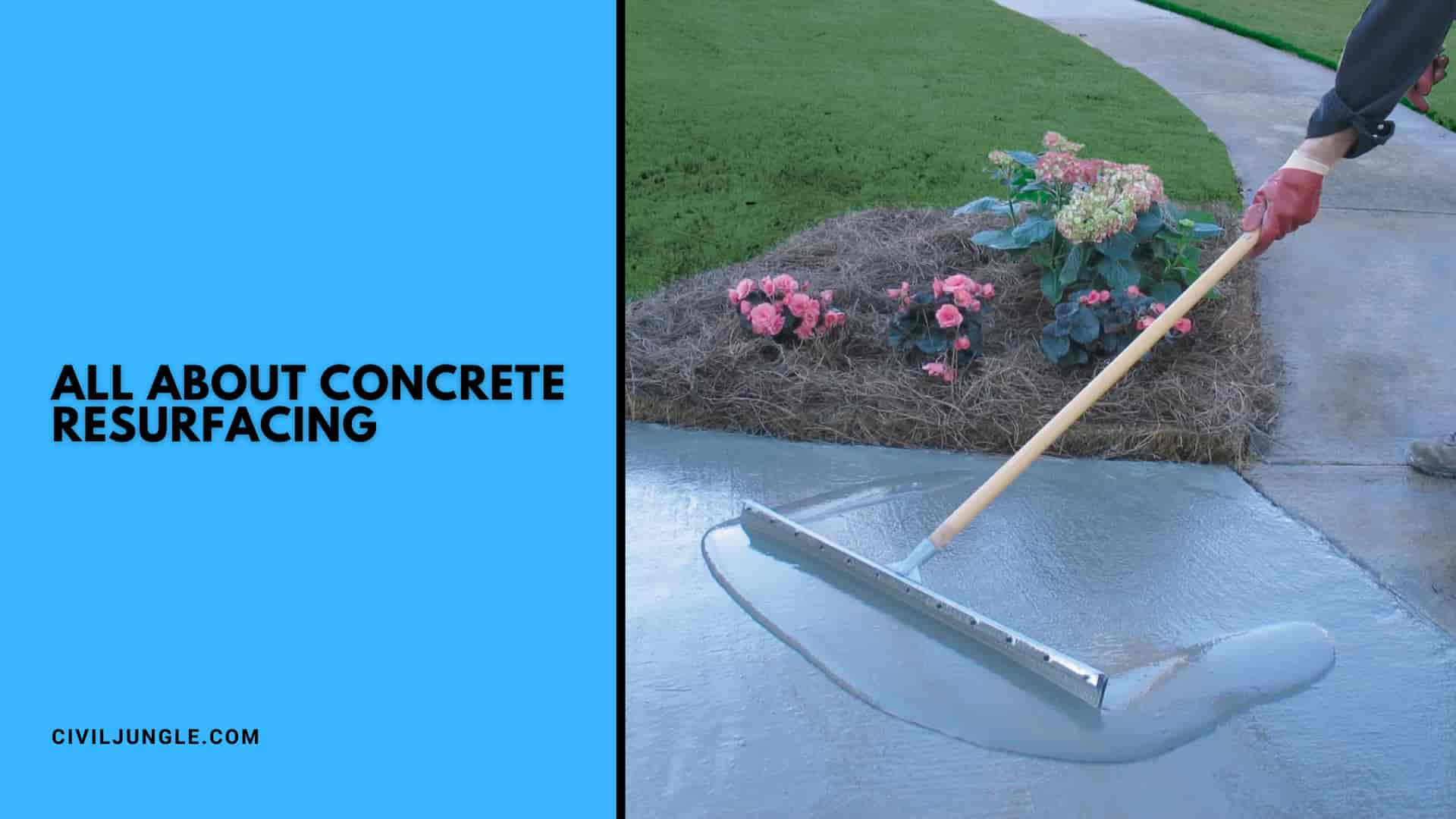
Does Concrete Resurfacing Last?
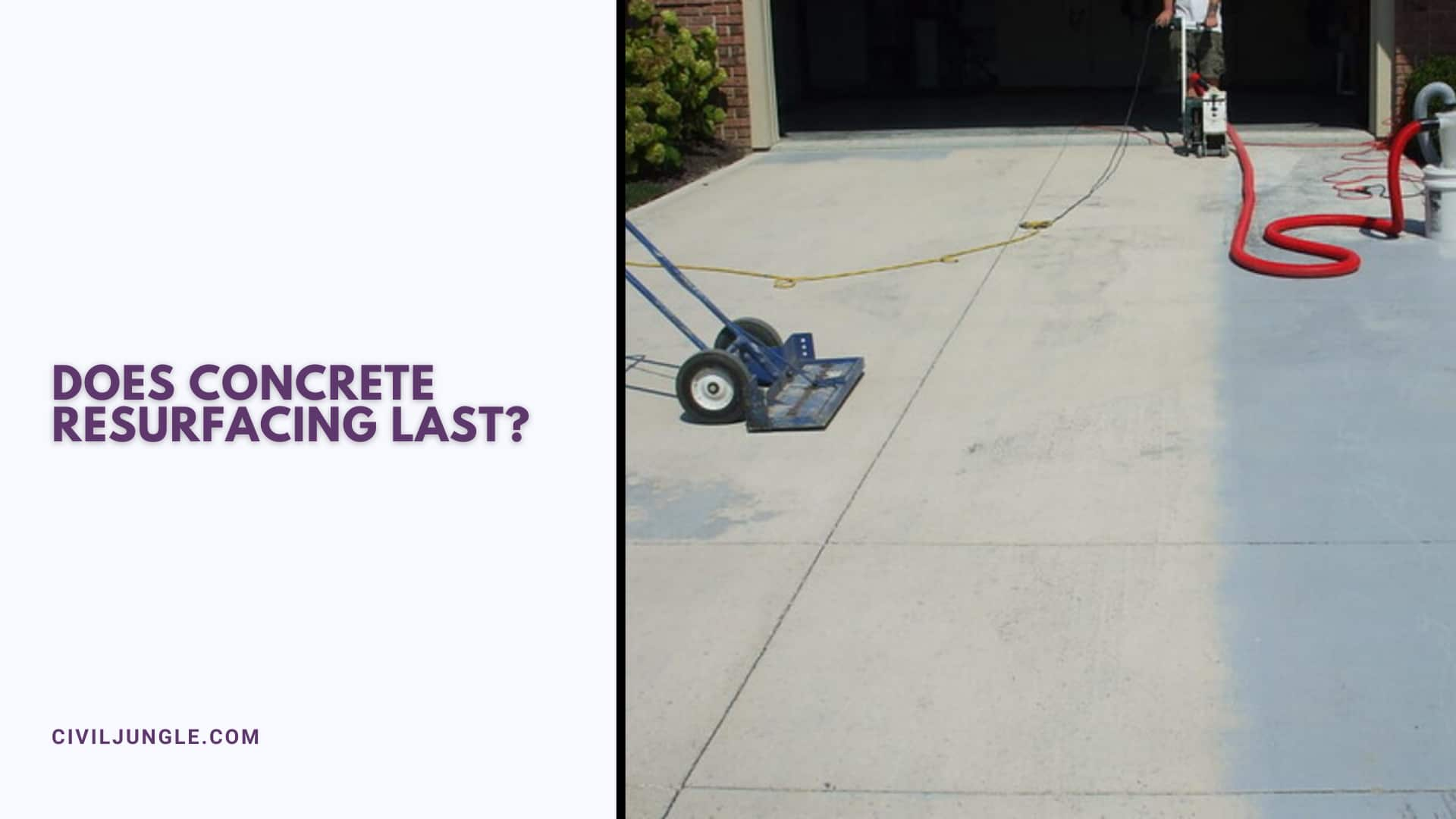
Concrete is one of the best materials for construction purposes in any country in the world. Concrete is generally a versatile material and it is easy to work with and it is also very cheap that’s why it is widely used all over the world.
Generally, concrete is made with a mixture of stones, sand, water, and cement. We also add reinforcement steel into the concrete to build tall and large structures. Sometimes, precast concrete is used to build long-span structures.
Concrete is basically used to build countertops and flat-cast products like floors, walkways, sidewalks, patios, etc. Tough concrete is a very hard and strong material but it does not last forever because of the random action of frost action, vibration, weight, impact and natural weather action.
If the slab or the casting portion is heavily damaged then you need to replace the whole portion. Sometimes, you do not need to replace the whole portion then you need to refinish the portion & then concrete resurfacing is the best option.
In the concrete resurfacing process, the top layer of the concrete is removed and a new layer of the concrete is poured and make sure that the new concrete creates enough strong bond with the existing concrete.
It is extremely strong if it is placed in a thin layer and it will last for 20 to 30 years. Concrete resurfacing provides a good-looking new product with a minimum price range.
What Is Concrete Resurfacing?
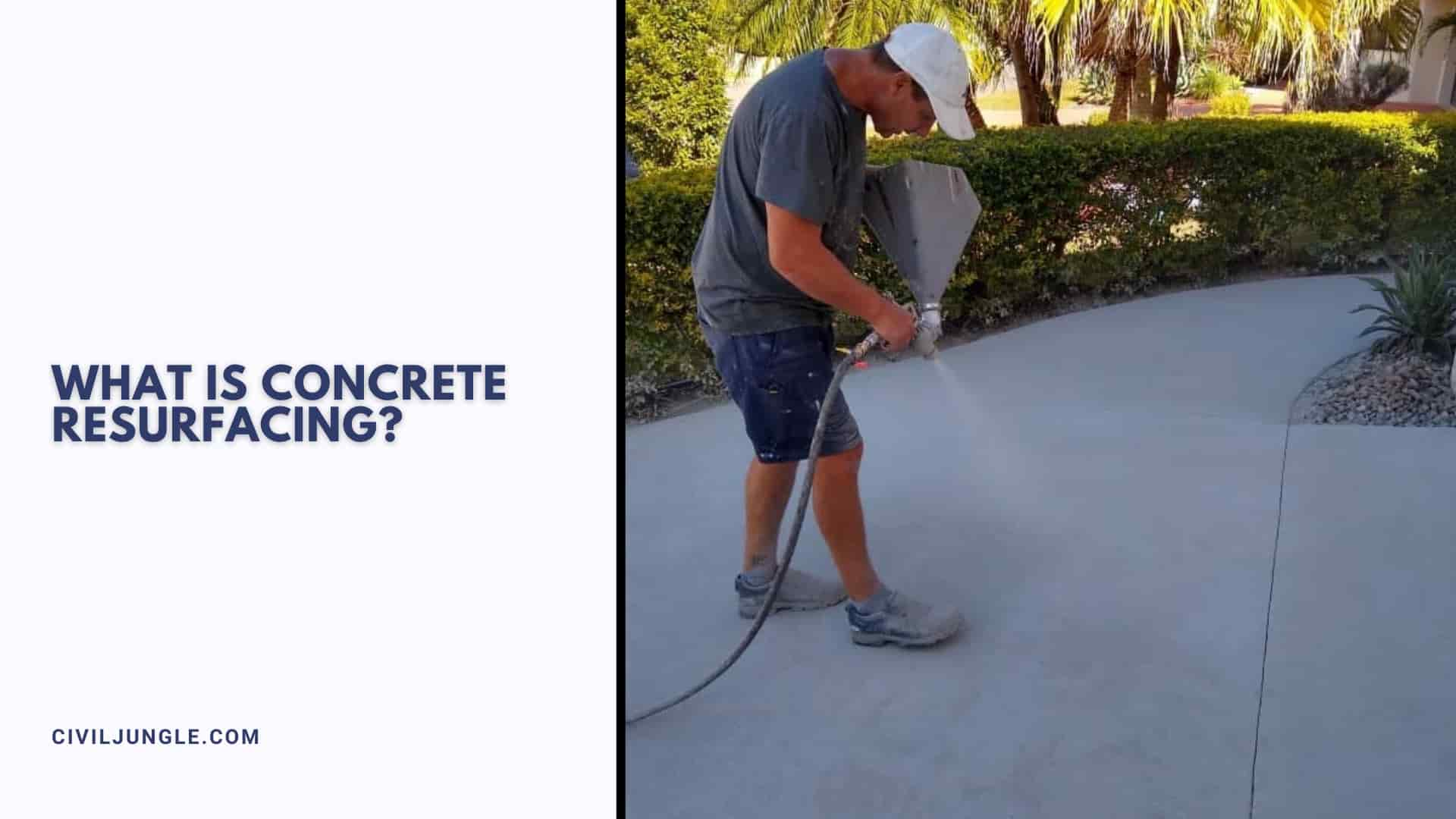
Sometimes, we demolish old slabs and cast new slabs. To overcome this situation we introduce a new process which is widely known as concrete resurfacing. In concrete resurfacing the older top layer of concrete is removed and a thin new layer of concrete is poured on the top.
The new concrete contains a bonding agent and it helps to create a good bond with the existing concrete layer. If you do not use the bonding agent then then the slab will not be a monolithic structure and cracks will generate. The resurfacing layer will increase the slab thickness by ½ inch.
What Does Resurfaced Concrete Look Like?
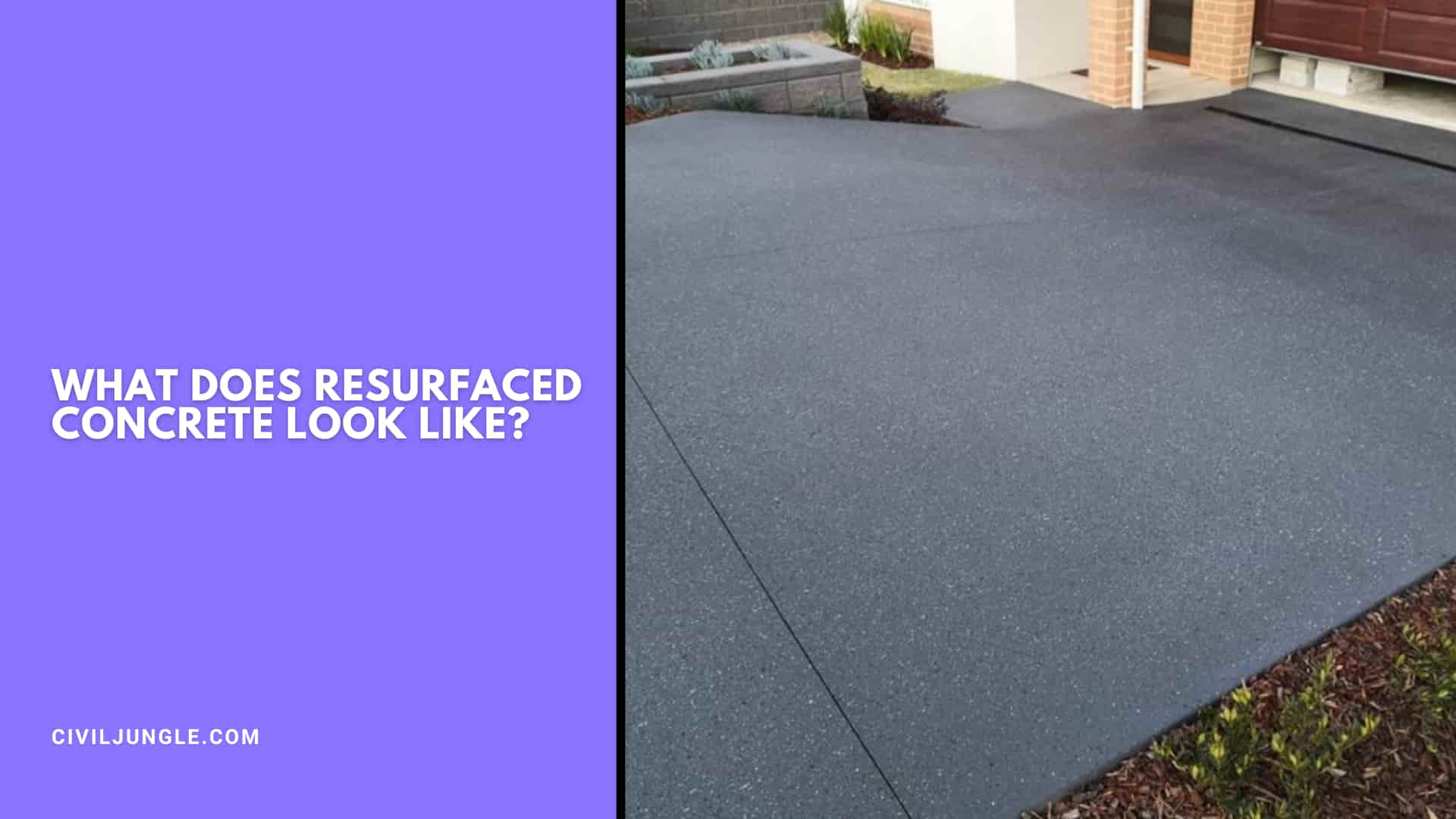
A resurfaced concrete looks almost the same as the new concrete floor. Sometimes it does not look like same because of adding some colour, different finishes, stamping, different mixes, etc.
So, there are several resurfacing options you can choose any one of them and also you can stay with the existing style. After resurfacing if you want to change the outlook of your concrete surface then you need to follow some things, that are following below-
- Colour- Colours are added with the mixture or using a sprayer, and the finish will be completed.
- Texture- If you want to change the texture of the concrete then add some new texture.
- Stamps- If you add some detailing then use stamps.
- Finish- sometimes a finishing coat Is used for shine purposes.
Can Concrete Be Resurfaced?
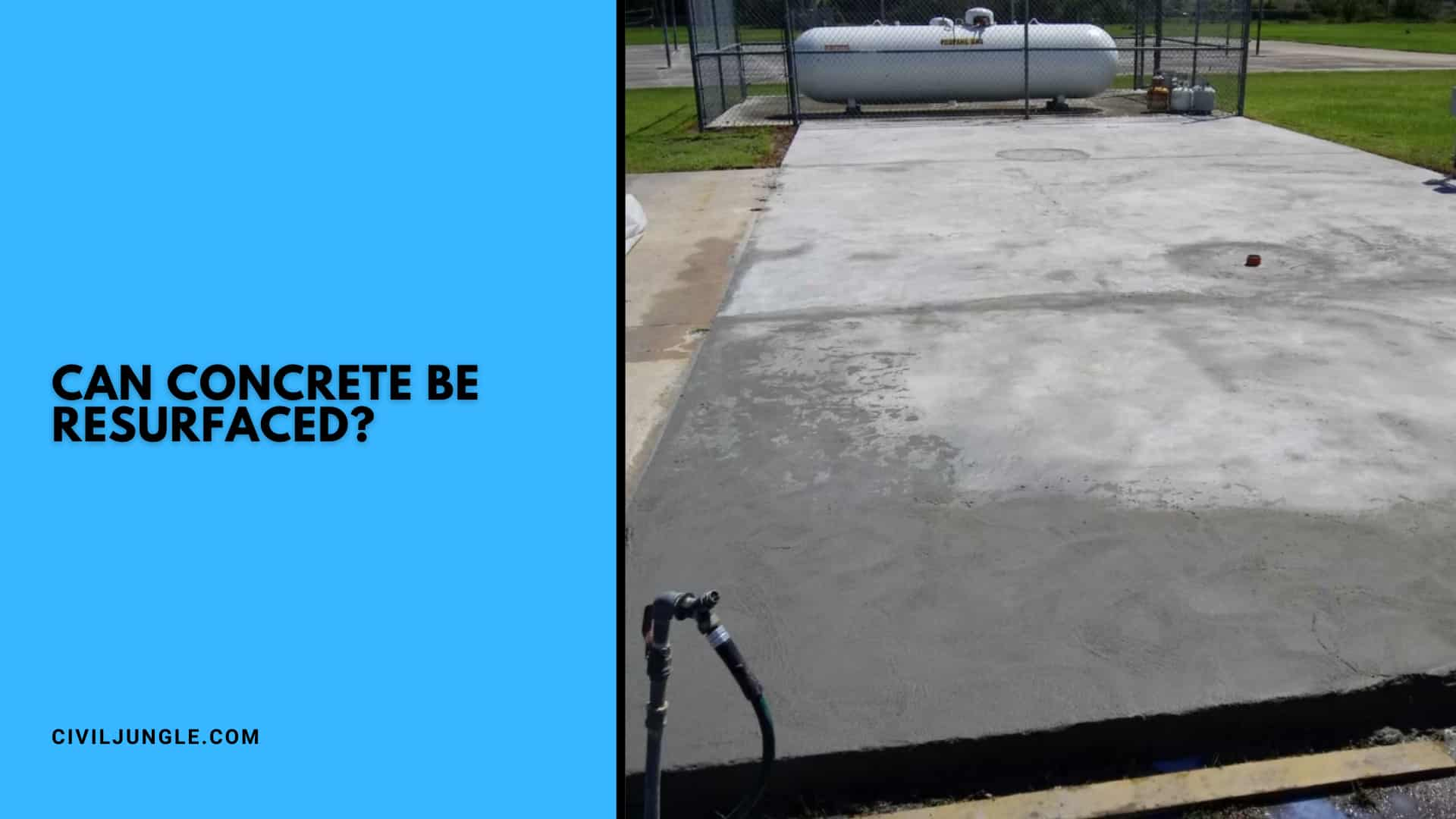
Concrete resurfacing is the process where the older top layer of concrete is removed and a thin new layer of concrete is poured on the top and it looks like a brand new product. Here, only the top layer is new and if the concrete is cracked or damaged then resurfacing is not possible.
If the existing slab has deep cracks then you go for replacing the concrete instead of resurfacing, otherwise, the new layer of concrete will increase the damage.
Partial removal is also another good substitute option where resurfacing of concrete is done only at the damaged portion. The best way to determine the resurfaced condition of concrete is to consult with Mason.
When Should Resurfacing Be Done?
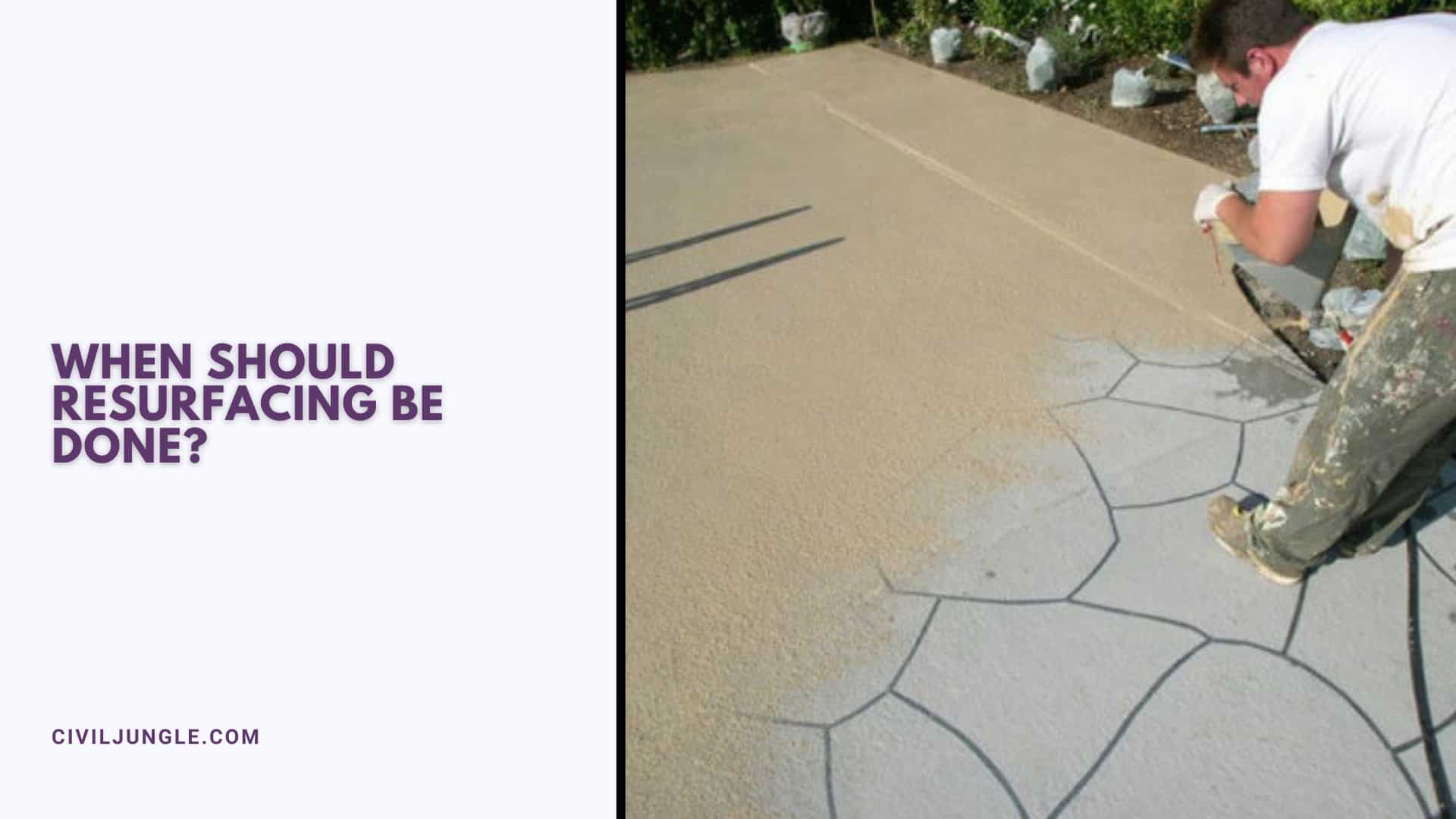
Resurfacing is basically pouring concrete and the best condition of resurfacing is above the freezing temperature and dry condition. When the surface is hot then do not pour concrete over it because water will be vaporized due to hot temperature.
Extreme cold conditions should also avoid because extreme cold conditions may freeze the internal water of the concrete. Choose a balanced temperature for concrete resurfacing.
When your concrete floor looks damaged and cracks, chipping, or flaking is observed then you should do concrete resurfacing.
How Much Does Resurfacing Cost?
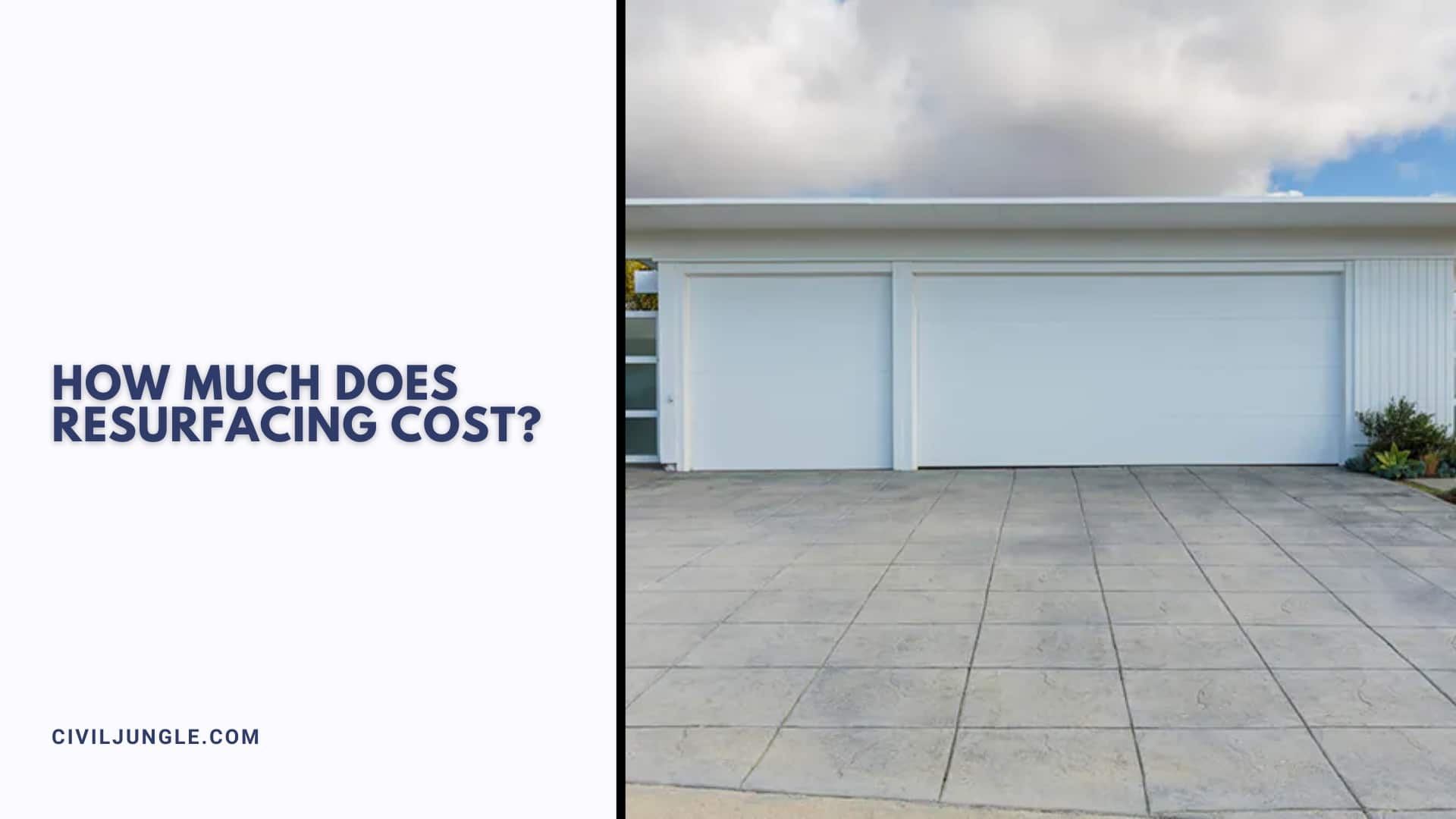
The resurfacing cost will vary according to the size and the condition of the existing concrete. There are a few parameters which need to take your account at the time of calculating resurfacing cost; those are the following below-
- Repairs- Upper damaged layer is removed to repair the concrete. Sometimes the damage is not on the top surface of the slab.
- Thickness– Thickness is also another parameter because if you increase the thickness of the slab then the cost will also increase.
- Additives– If you add additives like colour, and stains then it will increase the cost of the resurfacing.
Average Concrete Resurfacing Costs Per Square Foot:

The average resurfacing cost is discussed below in the chart-
| TYPE | PER SQUARE FOOT |
PER 100 SQUARE FEET
|
| Basic | $3 to $5 | $300 to $500 |
| Decorative (additional colour, finishes, polishing) | $5 to $10 | $500 to $1000 |
| Stamped | $8 to $20 | $800 to $2000 |
How Long Does Resurfacing Last?
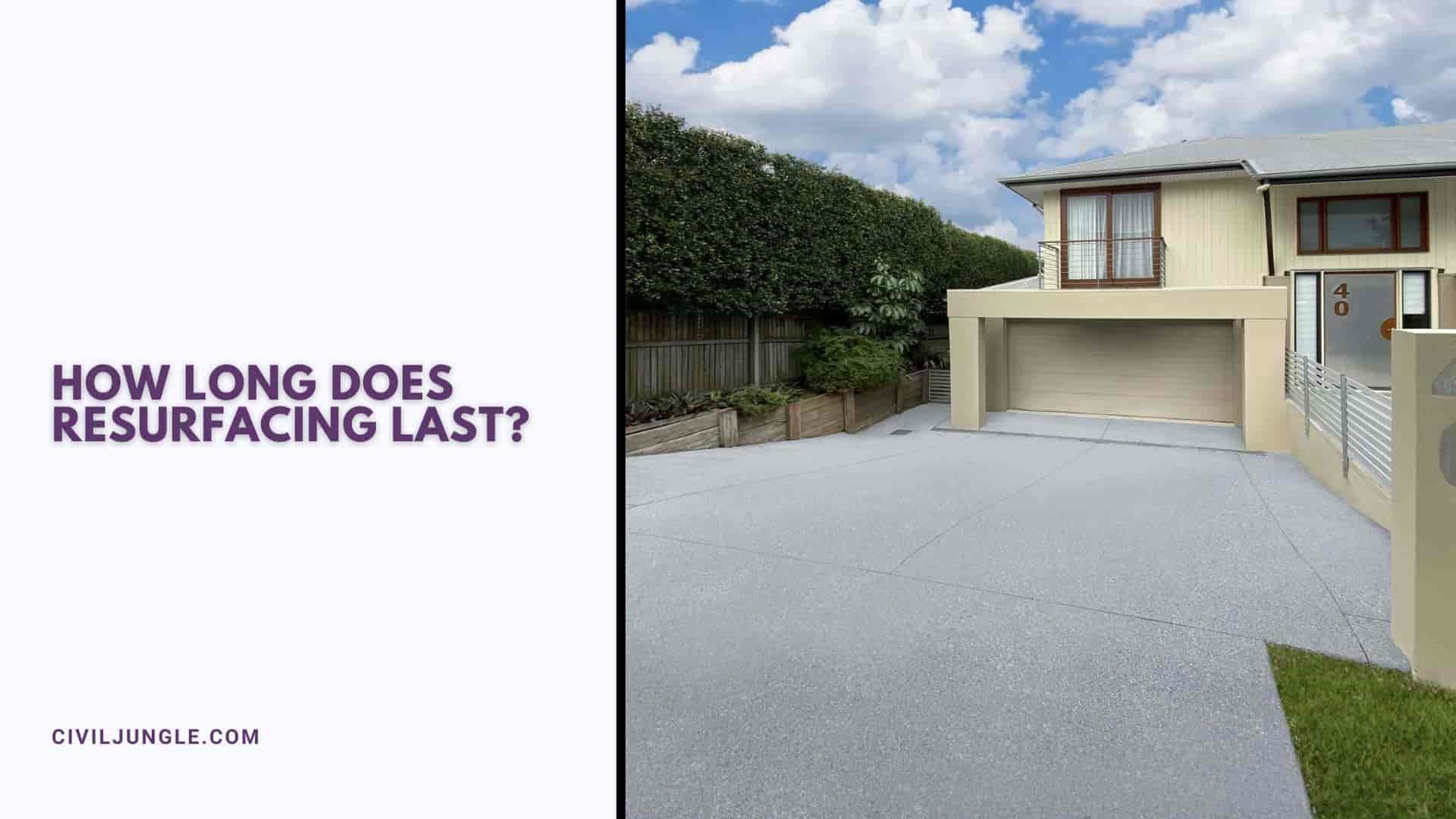
Concrete resurfacing lasts a long time only if the resurfacing process and materials are properly provided, the existing base is good enough. If it is properly done then concrete resurfacing lasts near about 10 to 20 years.
The longevity of concrete resurfacing increases if you properly installed and cured the resurfacing portion. So, if you pour resurfacing concrete on a damaged base concrete then it does not last longer.
Resurfacing is not a repairing process so, if you resurfaced on a damaged slab then it will look like brand new concrete but it contains some serious structural issues. Generally concrete does not need any maintenance but if you do some maintenance operation then will give benefits to you.
If the concrete rests in outdoor condition then if you use some sealants or any other materials like covering like tiles, or marble then it will increase the lifespan of the concrete.
If the tree root is the main cause of damage and you resurface the concrete then the problem will not be solved. It will appear after some days. So, at first, you need to uproot the tree root and then you can do your required work related to concrete resurfacing.
Can I Resurface My Own Concrete?
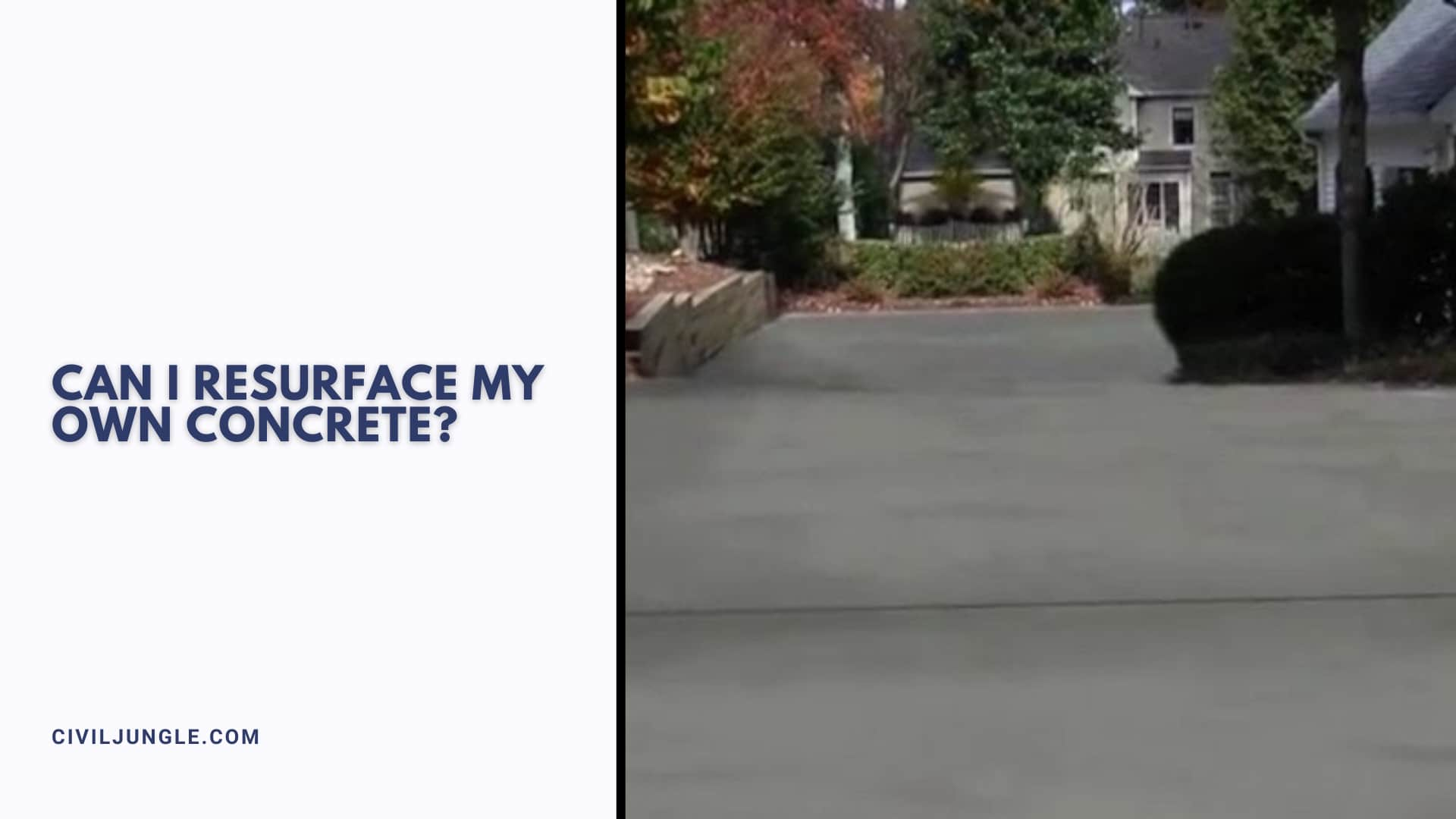
You can obviously do resurface operation with your own hand after buying resurfacing materials from a local store but only if the condition of the existing slab is good otherwise the slab is getting more damaged. So, we always recommend that hire an expert person for the resurfacing purposes.
Generally, preparation is one of the most important steps and if you have done your job without filling the cracks then it will not last forever and the cracks will appear after some days.
Resurfacing concrete work needs an expert finisher hand; so, if you are not an expert in that work then avoid that. After pouring resurfacing material it needs to be finished by broom, hand trowel, etc.
If you add some colour then add those materials at that time. Generally, all those works need some experience and time is very crucial because if all the work is not properly done at the right time then the concrete will start hardening.
If you find any damage to the older concrete slab then call a contractor and refix that at first.
Can You Stain Resurfaced Concrete?
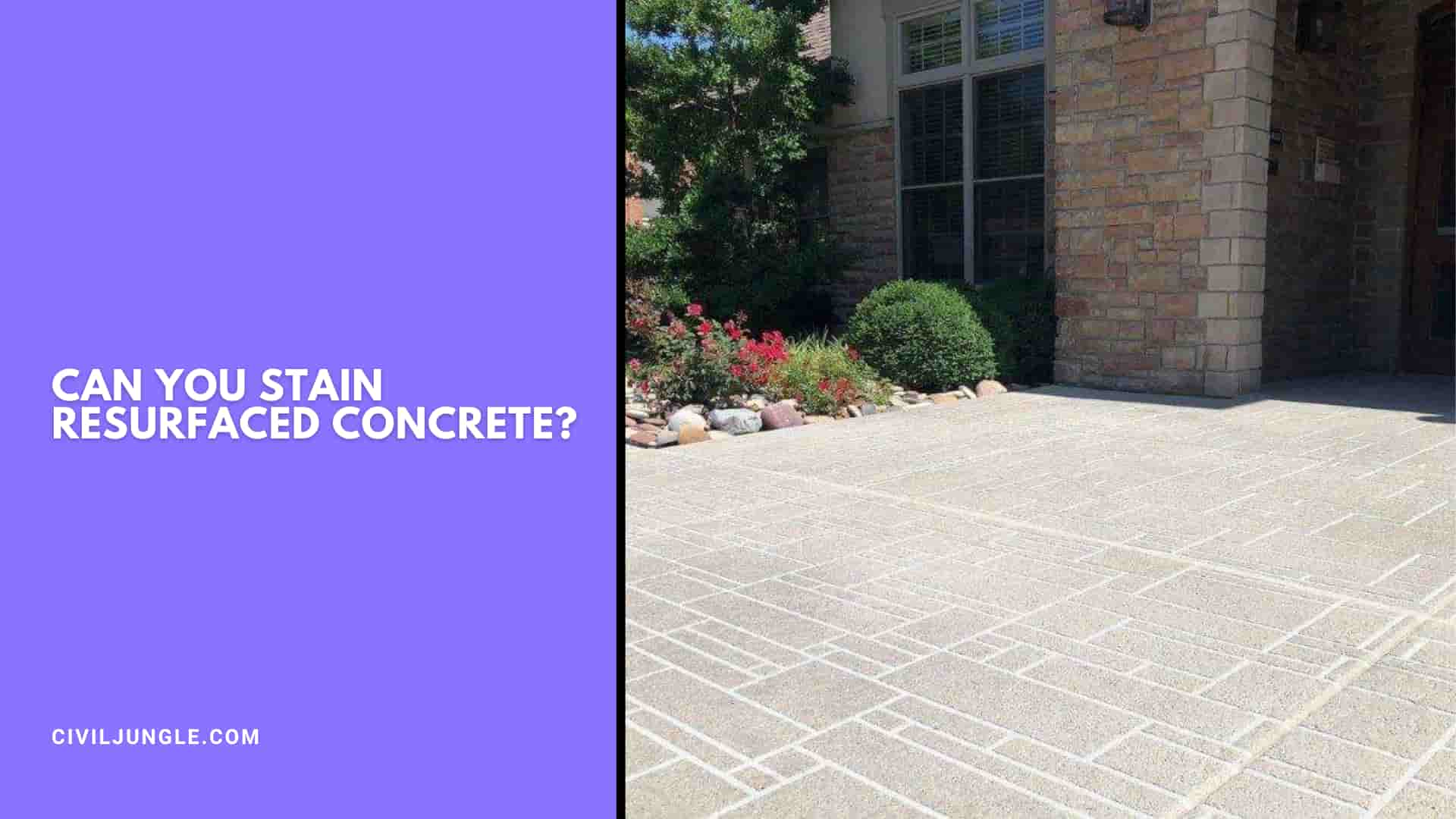
The use of stains on resurfaced concrete is almost the same as normal concrete stains. Always use concrete stains instead of wood or other types of stains.
Stain is not a type of paint, it reacts with the concrete or the resurfacer and permanently changes the concrete colour. There is no reverse process of staining concrete; so, make sure about your colour and test it within a small portion of your overall work.
Tips to Make Concrete Resurfacing Last
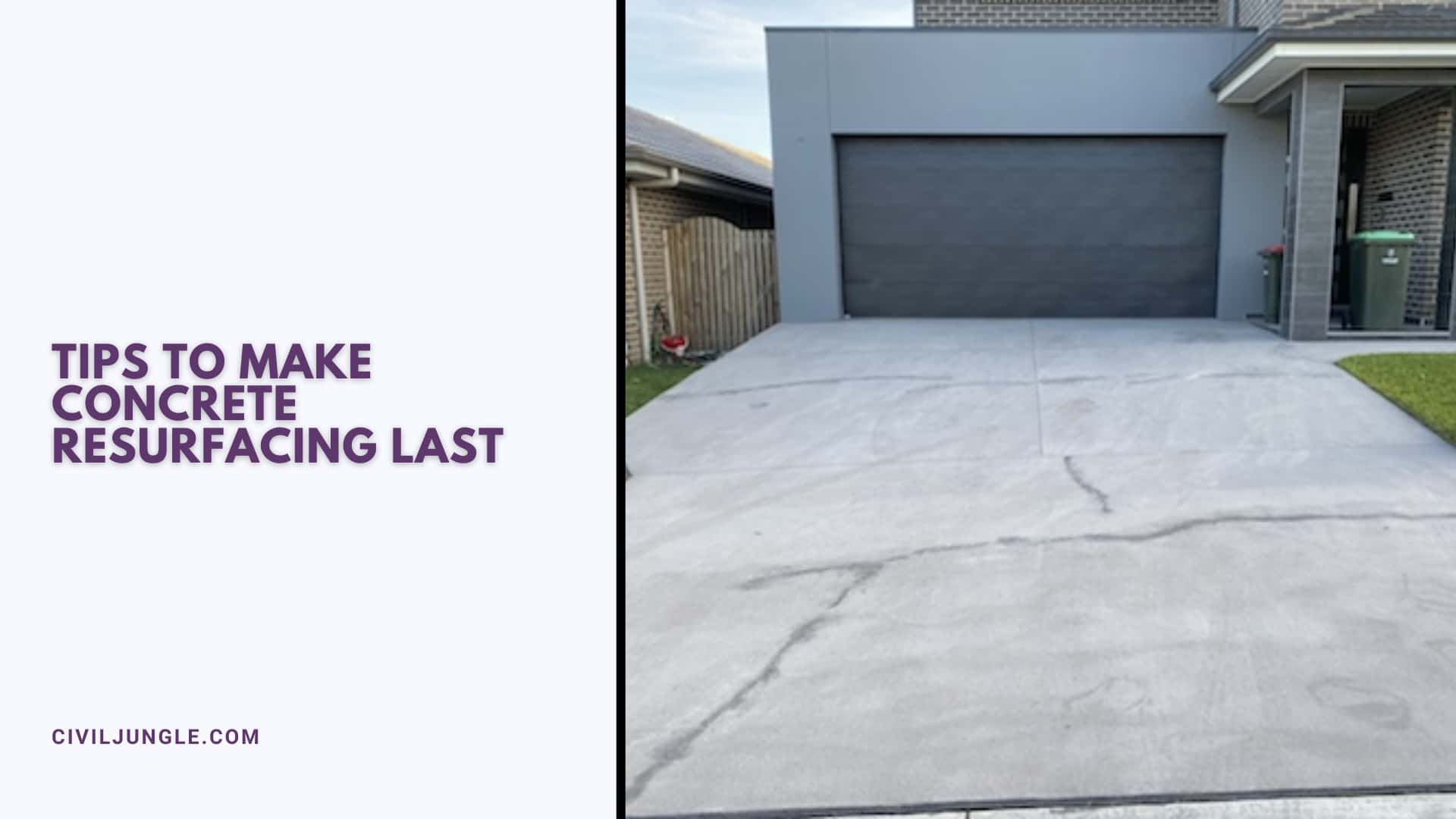
Here are some important lists for making concrete resurfacing, those are in the following-
- Repairs- The one thing you need to keep in your mind is that repair your existing concrete at first otherwise it does not last for a long period.
- Cleaning- Another important part is cleaning. Clean the upper surface of the concrete at first because if you pour resurfacing material on the existing concrete then the bonding materials do not work properly if you do not clean the surface properly. As a result, the new concrete will rest on the older concrete instead of making the bond between those and the monolithic structure will not create.
- Finish- Finish creates a good outlook to the concrete resurfacing and it almost likes a new one.
- Inspection- Inspection is very much needed for concrete resurfacing. So, before resurfacing, you need to do a good inspection by an expert person.
- Maintenance- Concrete does not need any maintenance but if you do some maintenance operation then will give benefits to you. Use some sealants or any other materials to increase the lifespan of the concrete.
FAQ on Concrete Resurfacing
What Is Concrete Resurfacing?
Concrete resurfacing involves removing the top layer of existing concrete and applying a thin new layer of concrete that bonds to the old surface. This process rejuvenates the appearance and function of the concrete without the need for a complete replacement.
How Long Does Resurfaced Concrete Last?
Properly applied concrete resurfacing can last between 10 to 20 years, depending on factors like the quality of materials, installation, and maintenance. Ensuring a good bond with the existing concrete and addressing underlying issues are key to longevity.
When Should Concrete Resurfacing Be Done?
Resurfacing should be considered when your concrete floor shows signs of damage such as cracks, chipping, or flaking. It’s best done in mild, dry weather conditions to avoid complications from extreme temperatures.
Can I Resurface My Own Concrete?
While it’s possible to resurface concrete on your own, it’s recommended to hire a professional for best results. Proper preparation, mixing, application, and finishing are crucial for a durable resurfacing job.
How Much Does Concrete Resurfacing Cost?
The cost of concrete resurfacing varies based on factors like the size of the area, condition of the existing concrete, and any added features such as color or texture. On average, basic resurfacing costs range from $3 to $5 per square foot, while decorative options can go up to $20 per square foot.
Can Resurfaced Concrete Be Stained?
Yes, resurfaced concrete can be stained. Use concrete-specific stains to ensure proper adhesion and color change. Remember to test the stain on a small area first, as staining is permanent and cannot be reversed.
What Are Some Tips for Making Concrete Resurfacing Last?
To ensure a successful and long-lasting resurfacing job, follow these tips:
- Repair any underlying damage before resurfacing.
- Clean the existing surface thoroughly to promote proper bonding.
- Ensure proper finishing and curing of the new concrete layer.
- Regularly maintain the resurfaced surface by sealing it and addressing any issues promptly.
Can Concrete Resurfacing Be Done on Severely Damaged Concrete?
If the existing concrete has deep cracks or significant structural issues, resurfacing may not be suitable. In such cases, it’s better to repair or replace the damaged concrete before applying a resurfacing layer.
What Are the Options for Resurfacing Finishes?
Options include adding color, texture, stamps, or a finishing coat to achieve a desired look. Choices will affect the overall appearance and cost of the resurfacing project.
How Can I Ensure Proper Bonding Between the Old and New Concrete?
Use a bonding agent to help the new resurfacing layer adhere to the old concrete. Proper cleaning and surface preparation are also essential to ensure a strong bond and prevent issues such as peeling or cracking.

